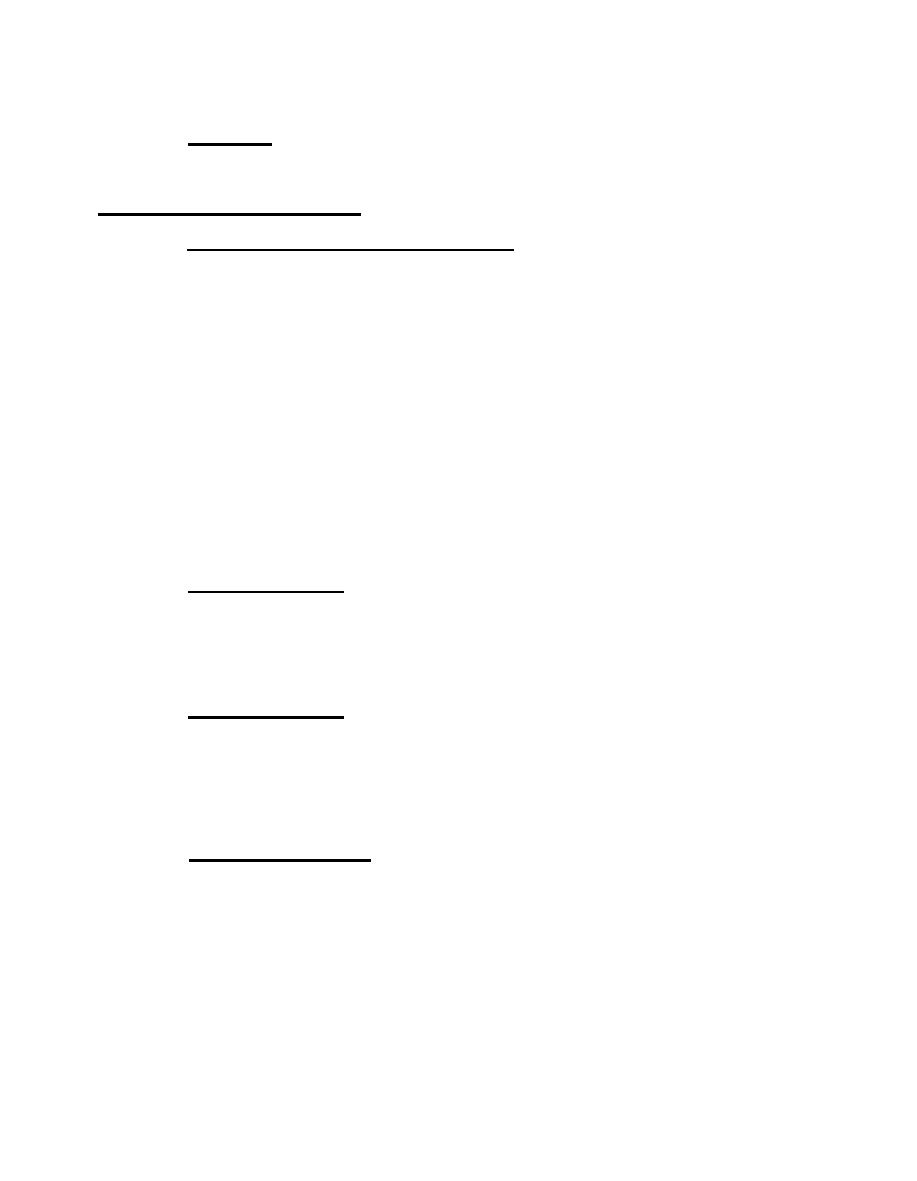
MIL-HDBK-1032/2
Selection. The selected thickness and type of insulation shall
6.2.6.2
result in minimum total life-cycle cost over the 25-year life of the structure.
For methods of determining the economic thickness, refer to the American
Society of Heating, Refrigeration, and Air Conditioning Engineers (ASHRAE)
ASHRAE Handbook, Fundamentals.
Mechanical Protection for Insulation. Provide mechanical protection
6.2.6.3
for insulation using exterior finishes described in subparagraph 6.2.8.
Otherwise, provide an auxiliary means of protection. The following factors
are significant in assuring insulation integrity.
a) Chemical Compatibility. Interior finishes shall be chemically
compatible with the surfaces to which they are applied.
b) Fire Retardance. Interior finishes shall have a flame-spread
rating of 75 or less and a smoke developed rating of 100 or less. Comply with
DOD 4270.1-M and DOD MIL-HDBK-1008.
c) Protection from Direct Water Entry. Interior finishes shall
provide protection from the direct entry of water during washing and cleaning
operations.
d) Freedom from Rot, Corrosion, and Odor. Interior finishes shall
neither absorb nor impart any odors to the stored product. Finishes shall not
be susceptible to decay caused by corrosion or rotting.
e) Repairability. Interior finishes shall be repairable at the
operating temperature of the refrigerated room or structure.
Exterior Finishes. Provide for expansion and contraction of the
6.2.7
building structure. Outer surfaces shall be designed to effectively withstand
prevalent conditions of weather, wind load, and corrosive environment.
Exterior finishes shall be fire resistant, water proof, and prevent the entry
of vermin. When the exterior surface is used as the vapor barrier, design
details shall include the recommendations listed in subparagraph 6.2.9.
Interior Finishes. Interior finishes shall mount apart from the
6.2.8
insulation. Interior finishes shall have a permeance significantly greater
than that of the vapor barrier system. No interior finish shall be used that
may cause contamination of stored products. Interior surfaces shall meet
health and sanitary regulations applicable to the intended storage and
facility use. The appearance of the interior finish shall be considered
secondary to its meeting of functional requirements.
Vapor Barrier System. Every installation shall be protected by a
6.2.9
vapor barrier system. Vapor barriers shall be placed on the warm side of the
insulation and be covered to prevent damage. Conditions of reverse vapor
flow, in which temperature vapor conditions are reversed from normal operating
conditions, shall be accounted for. Such conditions may typically occur in
climates where the refrigerated-space temperature may become greater than the
outside temperature, thus reversing the normal temperature pattern. Vapor
barrier systems shall be capable of withstanding expansion and contraction in
any direction without developing heat, air, or vapor leaks. Permeance shall be
no more than 0.1 perm. Vapor barrier systems shall have a minimum life
expectancy of 25 years. Special attention shall be given to designs in humid
climates where vapor transmissions are a significant problem.
86



 Previous Page
Previous Page
